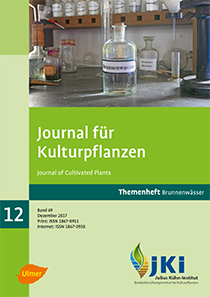Elemental composition of German well waters: Part 3 – Significance of the hydrogeochemical classification
DOI:
https://doi.org/10.5073/JfK.2017.12.03Keywords:
Hydrogeochemical classification, well water, water quality, chemical elements in watersAbstract
It was the objective of this study to analyse whether the hydrogeochemical classification according to Piper yields also information about elements which are not part of the classification and thus deliver additional value.
In the presented third out of four communications well water samples were attributed to hydrogeochemical main groups and classes according to Piper. The subsequent standardisation of the elemental concentrations was necessary in order to warrant a uniform loading of analytical results which is independent of the elemental concentration in the well water. This approach is suitable in order to identify extremes in the comprehensive data set which consisted of 637 locations and 69 elements. The results revealed that concentrations proved to be statistically significant between main groups according to Piper for 44 elements. In the Piper main group “earth alkaline waters with higher alkaline content” the highest number of elements (n = 24) with the lowest contents were found. In comparison, in the Piper main group “alkaline waters” in total 32 elements were represented in highest contents; the lowest contents were determined for Ca and Te in this main group. With respect to the Piper classes A–G a total number of 41 elements showed either significantly high or low concentrations. Essential macro- and micro-nutrients, beneficial elements and potentially detrimental elements are applied when using well water for irrigation so that the element-specific calculation of loads is recommended in order to assess effects on plants, soils and water.
Downloads
Published
Issue
Section
License
The content of the journal is licensed under the Creative Commons Attribution 4.0 License. Any user is free to share and adapt (remix, transform, build upon) the content as long as the original publication is attributed (authors, title, year, journal, issue, pages).
The copyright of the published work remains with the authors. The authors grant the Journal of Cultivated Plants, the Julius Kühn-Institut and the OpenAgrar repository the non-exclusive right to distribute and exploit the work.







